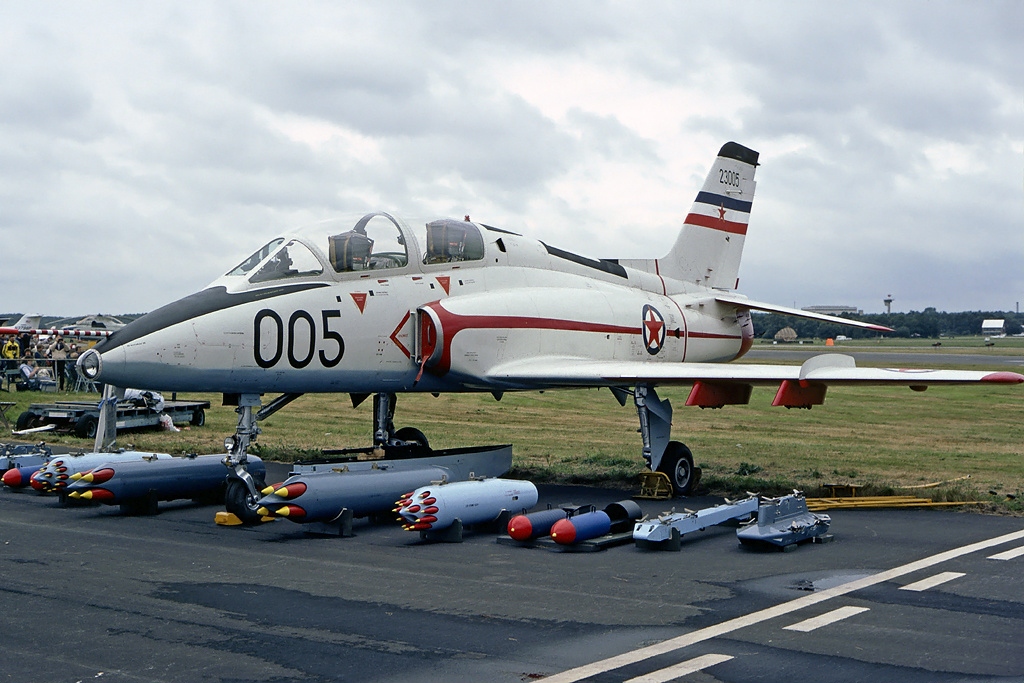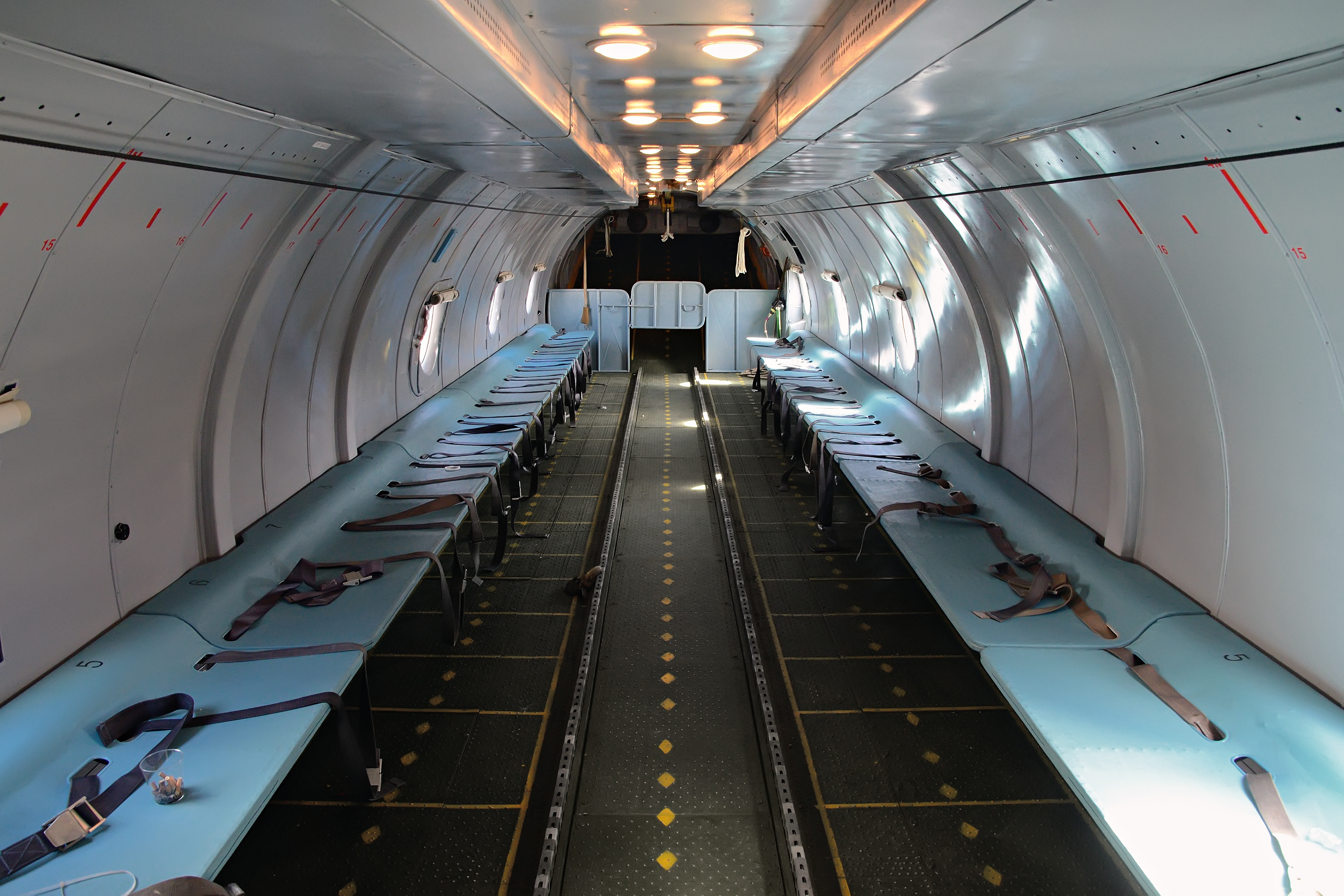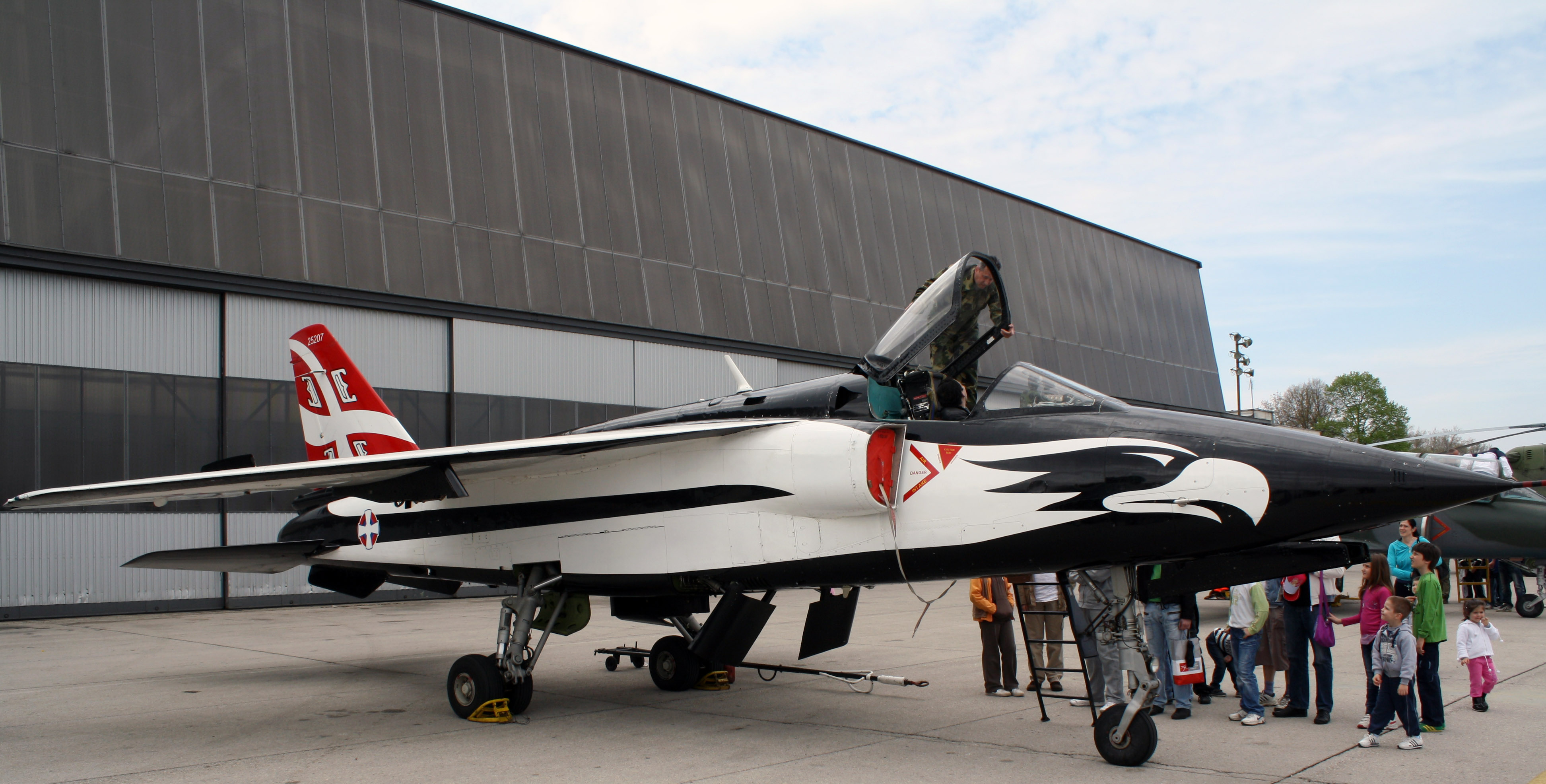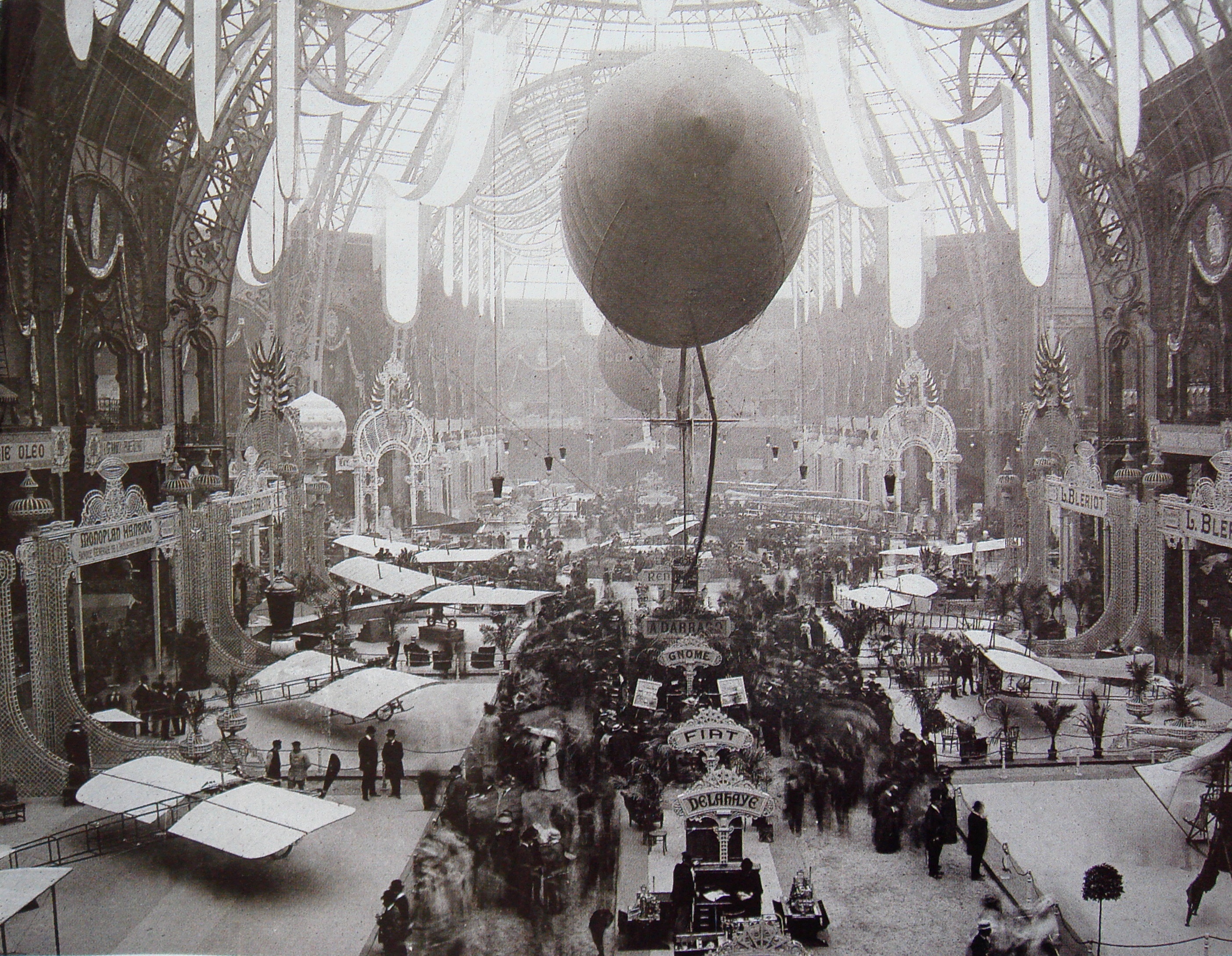|
Leteće Zvezde
The Leteće zvezde (Serbian Cyrillic: Летеће звезде, en, Flying Stars) was the official aerobatic flight display team of the Yugoslav Air Force. History Predecessors Yugoslavia has a long history of precision display flying which was first demonstrated to the public during an airshow at Zemun – Belgrade's military airfield – in June 1938. After World War II, a pair of SFR Yugoslav Air Force Jungmeisters made regular appearances at air displays in the late 1940s. These were followed by team of three Yakovlev Yak-3s, a five-plane grouping of the Ikarus S-49Cs (redesigned IK-3s) and in the late 1950s, the Air Force's first jet display team, flying F-84G Thunderjets. A new team formed by the 204th Fighter Aviation Regiment based at Batajnica (the unit's Canadair Mk 4 Sabers being responsible for the defense of Belgrade) flew over a crowd of 200.000 spectators attending the 1960 Belgrade Air show held at Zemun. This team lasted for five years until a four–shi ... [...More Info...] [...Related Items...] OR: [Wikipedia] [Google] [Baidu] |
Soko G-4
The Soko G-4 Super Galeb ( en, Super Seagull), also referred to as N-62, is a Yugoslav single-engine, advanced jet trainer and light ground-attack aircraft designed by the Aeronautical Technical Institute at Žarkovo and manufactured by the SOKO aircraft factory in Mostar. The Super Galeb was developed during the 1970s as a successor to, and replacement of, the Soko G-2 Galeb then in service with the Yugoslav Air Force ( sr-Latn, Ratno vazduhoplovstvo i protivvazdušna odbrana – RV i PVO; hr, Ratno zrakoplovstvo i protuzračna obrana – RZ i PZO). On 17 July 1978, the maiden flight was performed by a development aircraft, designated ''G-4 PPP''; during 1983, the first ''G-4'' made its first flight. Quantity production of the type commenced in 1984; the assembly line operated up until the breakup of Yugoslavia in 1991. A total of 85 aircraft were built, most of which went into service with the Yugoslav Air Force, although six G-4s were exported to Myanmar. During the Yugoslav ... [...More Info...] [...Related Items...] OR: [Wikipedia] [Google] [Baidu] |
Batajnica
Batajnica ( sr-Cyrl, Батајница, ) is an urban neighborhood of Belgrade, the capital city of Serbia. It is located in the Belgrade municipality of Zemun. Location and geography Batajnica is located in the Syrmia region, in the northern part of the municipality, close to the administrative border of the province of Vojvodina and it is both the northernmost and the westernmost part of the Belgrade's urban area. It is close to the Danube's right bank, but not on the river itself, due to the floodings. A small, 114 metre-high hillock separates the settlement from the river. It is some 15 kilometres away from downtown Belgrade, but only 6 kilometres away from Nova Pazova and Novi Banovci, fast growing settlements in the Vojvodina's municipality of Stara Pazova, to which it almost makes a continuous built-up area. : it extends to the southwest in the direction of Ugrinovci's neighborhood of Busije and southeast in the direction of other Zemun's neighborhoods: Zemun Polje, Ga ... [...More Info...] [...Related Items...] OR: [Wikipedia] [Google] [Baidu] |
An-26
The Antonov An-26 (NATO reporting name: Curl) is a twin-engined turboprop civilian and military transport aircraft, designed and produced in the Soviet Union from 1969 to 1986.Gordon, Yefim. Komissarov, Dmitry & Sergey. "Antonov's Turboprop Twins". Hinkley. Midland. 2003. Development While the An-24T tactical transport had proved successful in supporting Soviet troops in austere locations, its ventral loading hatch restricted the handling of cargo, and in particular vehicles, and made it less effective than hoped in parachuting men and supplies. As a result, interest in a version with a retractable cargo ramp increased, and the Antonov design bureau decided in 1966 to begin development on the new An-26 derivative, in advance of an official order. The cargo ramp was based on that design and allowed the cargo deck to be sealed and pressurised in flight. When loading cargo, it could either be lowered to allow vehicles to be driven in, or slid beneath the aircraft's fuselage, so tha ... [...More Info...] [...Related Items...] OR: [Wikipedia] [Google] [Baidu] |
Vršac
Vršac ( sr-cyr, Вршац, ; hu, Versec; ro, Vârșeț) is a List of cities in Serbia, city and the administrative centre of the South Banat District in the autonomous province of Vojvodina, Serbia. As of 2011, the city urban area had a population of 35,701, while the city administrative area had 52,026 inhabitants. It is located in the geographical region of Banat. Name The name ''Vršac'' is of Serbian language, Serbian origin, ultimately deriving from Proto-Slavic wikt:Reconstruction:Proto-Slavic/vьrxъ, *vьrxъ, meaning "summit" In Serbian, the city is known as Вршац or ''Vršac'', in Romanian language, Romanian as ''Vârșeț'', in Hungarian language, Hungarian as ''Versec'' or ''Versecz'', in German language, German as ''Werschetz'', and in Turkish language, Turkish as ''Virşac'' or ''Verşe''. History There are traces of human settlement from the paleolithic, Palaeolithic and Neolithic periods. Remains from two types of Neolithic cultures have been discovered ... [...More Info...] [...Related Items...] OR: [Wikipedia] [Google] [Baidu] |
Niš
Niš (; sr-Cyrl, Ниш, ; names in other languages) is the third largest city in Serbia and the administrative center of the Nišava District. It is located in southern part of Serbia. , the city proper has a population of 183,164, while its administrative area (City of Niš) has a population of 260,237 inhabitants. Several Roman emperors were born in Niš or used it as a residence: Constantine the Great, the first Christian emperor and the founder of Constantinople, Constantius III, Constans, Vetranio, Julian, Valentinian I, Valens; and Justin I. Emperor Claudius Gothicus decisively defeated the Goths at the Battle of Naissus (present-day Niš). Later playing a prominent role in the history of the Byzantine Empire, the city's past would earn it the nickname ''Imperial City.'' After about 400 years of Ottoman rule, the city was liberated in 1878 and became part of the Principality of Serbia, though not without great bloodshed—remnants of which can be found throughou ... [...More Info...] [...Related Items...] OR: [Wikipedia] [Google] [Baidu] |
J-22 Orao
The Soko J-22 Orao ( sr-cyr, text=Oрао, translation=eagle) is a Yugoslav twin-engined, subsonic ground-attack and aerial reconnaissance aircraft. It was developed and built in collaboration by SOKO in Yugoslavia and by Avioane Craiova in neighbouring Romania, being known in the latter as the IAR-93 Vultur. The Orao was designed as either a single-seat main attack version or as a combat-capable twin-seat version, the latter being principally intended for advanced flight- and weapons-training duties. It was developed as a joint Yugoslav-Romanian project, known as YuRom, during the 1970s. Early ambitions to produce a supersonic fighter were scuppered by Britain's unwillingness to permit the desired engine to be license-produced in Eastern Europe. Further difficulties in fitting an afterburner to the older Rolls-Royce Viper also hindered development and the performance of early-build aircraft. First flying during November 1974, the resulting aircraft would equip the air forc ... [...More Info...] [...Related Items...] OR: [Wikipedia] [Google] [Baidu] |
MiG-21
The Mikoyan-Gurevich MiG-21 (russian: Микоян и Гуревич МиГ-21; NATO reporting name: Fishbed) is a supersonic jet fighter and interceptor aircraft, designed by the Mikoyan-Gurevich Design Bureau in the Soviet Union. Its nicknames include: "balalaika", because its planform resembles the stringed musical instrument of the same name; "''Ołówek''", Polish for "pencil", due to the shape of its fuselage, and "''Én Bạc''", meaning "silver swallow", in Vietnamese. Approximately 60 countries across four continents have flown the MiG-21, and it still serves many nations six decades after its maiden flight. It set aviation records, becoming the most-produced supersonic jet aircraft in aviation history, the most-produced combat aircraft since the Korean War and, previously, the longest production run of any combat aircraft (now exceeded by both the McDonnell Douglas F-15 Eagle and General Dynamics F-16 Fighting Falcon). Development Origins The MiG-21 jet fight ... [...More Info...] [...Related Items...] OR: [Wikipedia] [Google] [Baidu] |
Podgorica
Podgorica (Cyrillic script, Cyrillic: Подгорица, ; Literal translation, lit. 'under the hill') is the Capital city, capital and List of cities and towns in Montenegro, largest city of Montenegro. The city was formerly known as Titograd (Cyrillic script, Cyrillic: Титоград, ) between 1946 and 1992—in the period that Montenegro formed, as the Socialist Republic of Montenegro in honour of Marshal of Yugoslavia, Marshal Josip Broz Tito. The city was largely destroyed during the bombing of Podgorica in World War II and accordingly the city is now dominated by architecture from the following decades of communism. Further but less substantial damage was caused by the NATO bombing of Yugoslavia, 1999 bombing by NATO forces. The surrounding landscape is predominantly Mountain range, mountainous terrain. The city is just north of the Lake Skadar and close to coastal destinations on the Adriatic Sea. Historically, it was Podgorica's position at the confluence of the Ribn ... [...More Info...] [...Related Items...] OR: [Wikipedia] [Google] [Baidu] |
Slovenia
Slovenia ( ; sl, Slovenija ), officially the Republic of Slovenia (Slovene: , abbr.: ''RS''), is a country in Central Europe. It is bordered by Italy to the west, Austria to the north, Hungary to the northeast, Croatia to the southeast, and the Adriatic Sea to the southwest. Slovenia is mostly mountainous and forested, covers , and has a population of 2.1 million (2,108,708 people). Slovenes constitute over 80% of the country's population. Slovene, a South Slavic language, is the official language. Slovenia has a predominantly temperate continental climate, with the exception of the Slovene Littoral and the Julian Alps. A sub-mediterranean climate reaches to the northern extensions of the Dinaric Alps that traverse the country in a northwest–southeast direction. The Julian Alps in the northwest have an alpine climate. Toward the northeastern Pannonian Basin, a continental climate is more pronounced. Ljubljana, the capital and largest city of Slovenia, is geogr ... [...More Info...] [...Related Items...] OR: [Wikipedia] [Google] [Baidu] |
Ten-Day War
The Ten-Day War ( sl, desetdnevna vojna), or the Slovenian War of Independence (), was a brief armed conflict that followed Slovenia's declaration of independence from Yugoslavia on 25 June 1991. It was fought between the separatists of the Slovenian Territorial Defence and the Yugoslav People's Army (or JNA). It lasted from 27 June 1991 until 7 July 1991, when the Brioni Accords were signed. It was the second of the Yugoslav wars to start in 1991, following the Croatian War of Independence, and by far the shortest of the conflicts with fewest overall casualties. The war was brief because the Yugoslav People's Army (JNA, dominated by Serbo-Montenegrins, although still made up of all the nationalities of Yugoslavia) did not want to waste resources on this campaign, as it was preparing for the Croatian War of Independence, where the Serbo-Montenegrin majority in Yugoslavia did have territorial uses, unlike Slovenia, which was considered "ethnically homogeneous" and therefore ... [...More Info...] [...Related Items...] OR: [Wikipedia] [Google] [Baidu] |
Paris Air Show
The Paris Air Show (french: Salon international de l'aéronautique et de l'espace de Paris-Le Bourget, Salon du Bourget) is a trade fair and air show held in odd years at Paris–Le Bourget Airport in north Paris, France. Organized by the French aerospace industry's primary representative body, the ''Groupement des industries françaises aéronautiques et spatiales'' (GIFAS), it is the largest air show and aerospace-industry exhibition event in the world, measured by number of exhibitors and size of exhibit space, followed by UK's Farnborough Air Show, Dubai Air Show, and Singapore Airshow. First held in 1909, the Paris Air Show was held every odd year from 1949 to 2019, when the 53rd Air Show attracted 2,453 exhibitors from 49 countries and occupied more than 125,000 square meters. Organizers canceled the 2021 show due to the COVID pandemic and said it would resume in 2023. It is a large trade fair, demonstrating military and civilian aircraft, and is attended by many military ... [...More Info...] [...Related Items...] OR: [Wikipedia] [Google] [Baidu] |







.jpg)
